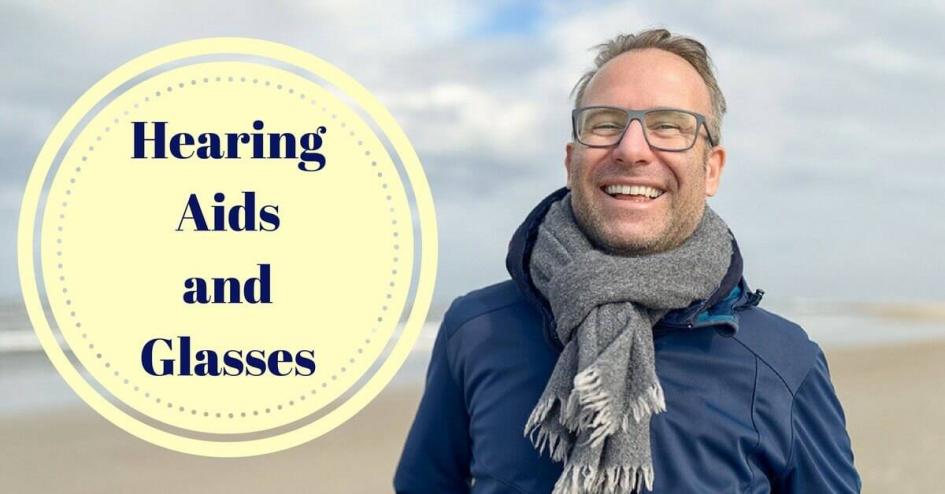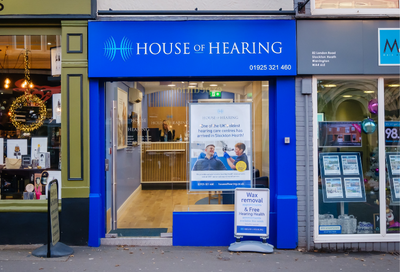
Hearing Aids and Glasses
Mar 29, 2017
Hearing Aids and Glasses
Is it possible to wear hearing aids while wearing glasses? This is a very common question for people looking for their first hearing aid. We’ll take a look at what the main concerns are, how to wear your glasses and hearing aid together, and what other options you have. BTE and RITE hearing aids Behind-the-ear (BTE) and Receiver-In-The-Canal (RITE) hearing aids are among the most popular, affordable and dependable devices on the market. They are suitable for all kinds of hearing loss, from mild to profound, and BTE aids are also made for children. Most hearing aid companies offer these hearing aids in a variety of different colours and sizes. BTE and RITE hearing aids sit behind the ear. A thin tube (BTE) or thin wire (RITE) hooks over the top of the ear and connects the body of the hearing aid to the ear canal using a custom-fitted ear mould. As the body of the hearing aid shares the same “ear space” as the glasses frames, many spectacle-wearers worry that this could feel uncomfortable. As we’ll see, that’s often not the case. Aren’t these hearing aids bulky? As technology speeds forward, modern hearing aids are being constantly redesigned and updated, and are now sophisticated, comfortable and discreet. Power BTE hearing aids, which cater for severe to profound hearing loss, were often associated with the bulky and uncomfortable styles of days of yore. This is because they needed a bigger battery in order to provide more powerful amplification. New innovations in battery technology mean that this is no longer the case, and today’s BTEs are smaller and more discreet than ever. For example, ReSound’s ENZO power hearing aid is the smallest and most powerful hearing aid on the market. Phonak’s power hearing aid Naída is 25% thinner than previous models. This means that the over-the-ear fit will be much more comfortable while wearing glasses. Oticon’s power BTE range for children is called Sensei SP. Sensei is robustly designed for the rough-and-tumble of a kid’s busy day – and it’s also available in Oticon’s smallest BTE model. How do you wear them together? Generally, people prefer to put their glasses on first, and then fit the hearing aid afterwards. This means that the spectacles frame will sit next to your head, with the hearing aid on the outer side of your ear. Use a mirror to check the fit. If you prefer to put the hearing aid on first, that’s fine too. Just beware that you may hear a noise when you put your glasses on, as the frame touches the hearing aid microphones. It shouldn’t cause any more noise once you are wearing the glasses. When you remove your glasses, use both hands to hold the frame steady and pull them off evenly. If you use one hand or pull them off to the side, your hearing aid might become dislodged. Do they interfere with each other? Most people wear BTE and RITE hearing aids and glasses together with no problem. There are a few situations where you may experience discomfort:- If you often switch between different pairs of glasses, or put them on and take them off through the day, you might find that hearing aids get in the way.
- If your ears are especially small, and your pinna (the top-most part of your ear) is very close to your head, then you may find it uncomfortable. This is not very common, and even children’s ears are usually wide enough to accommodate both glasses and hearing aids.
- If the ‘earhook’ of your glasses frame is very thick, or if you are wearing one of the larger BTE hearing aids, you may experience some discomfort. In this case, swapping your spectacles for a different design, such as ones with a lightweight wire-rim may be much more comfortable.
Our Clinics
All House of Hearing clinics are in town centre locations and accessible to public transport and parking. Home visits also available if mobility is an issue.


.png)
.png)
.png)

.png)
